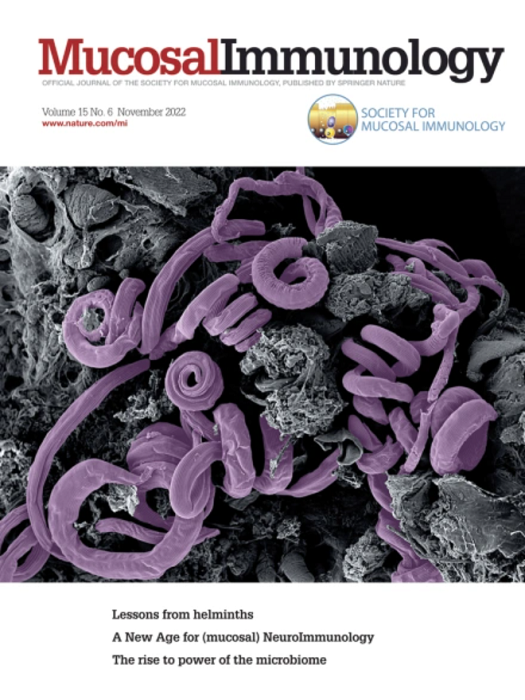Chronological maturation of the skin immune barrier is topographically different
IF 7.6
2区 医学
Q1 IMMUNOLOGY
引用次数: 0
Abstract
Adult skin varies across regions, with differences in chemical, physical, microbiota, and immune barriers. However, data on topographical immune differences in other age groups are limited. This study aimed to explore the chronological maturation of the immune barrier in various skin regions.
A TaqMan low-density array and immunohistochemical and immunofluorescence detection of various immune cells and mediators in sebaceous gland-rich (SGR) and gland-poor (GP) healthy skin were performed in children, adolescents, and adults.
The maturation of SGR skin showed a general upward trend in the mRNA levels of most Th17-related molecules with a significant increase in IL-1B from childhood to adulthood, but with only a slight elevation between childhood and adolescence. In addition, T cell, Treg, dendritic cell (DC) counts, as well as the levels of several Th17-related proteins (IL-17, IL-10, IL-23, CCL20, S100A8, sfTSLP, LCN2), increased significantly with age. In GP skin, AHR mRNA levels decreased, while Th17-related protein levels increased, although only moderately. When comparing the two regions, SGR and GP skin were similar in childhood, with differences emerging in adolescence and becoming significant in adulthood, particularly in the IL-17 pathway, mainly produced by Th17 cells.
Our results show a similarly directed maturation process in GP and SGR regions, with more pronounced development of the SGR skin immune barrier (with more immune cell infiltration and cytokine production) during and after the adolescence. This is likely to be related to the significant changes in the chemical and microbiota barriers of the SGR skin during adolescence, and may explain the high incidence of inflammatory skin diseases on the SGR skin of adolescents, highlighting the need for targeted skin care in this region.
皮肤免疫屏障的成熟时间在地形上是不同的。
成年人的皮肤因地区而异,在化学、物理、微生物群和免疫屏障方面存在差异。然而,关于其他年龄组地形免疫差异的数据有限。本研究旨在探讨不同皮肤区域免疫屏障的成熟时间。对儿童、青少年和成人皮脂腺丰富(SGR)和皮脂腺贫乏(GP)健康皮肤中的各种免疫细胞和介质进行TaqMan低密度阵列和免疫组织化学和免疫荧光检测。在SGR皮肤成熟过程中,大多数th17相关分子的mRNA水平总体呈上升趋势,IL-1B在儿童期至成年期显著升高,但在儿童期至青少年期仅略有升高。此外,随着年龄的增长,T细胞、Treg、树突状细胞(DC)计数以及几种th17相关蛋白(IL-17、IL-10、IL-23、CCL20、S100A8、sfTSLP、LCN2)水平均显著升高。在GP皮肤中,AHR mRNA水平下降,而th17相关蛋白水平升高,尽管只是适度升高。在比较这两个区域时,SGR和GP皮肤在儿童时期是相似的,在青春期出现差异,并在成年期变得显著,特别是在主要由Th17细胞产生的IL-17途径上。我们的研究结果显示,在青春期和青春期后,GP和SGR区域的成熟过程类似,SGR皮肤免疫屏障的发育更为明显(免疫细胞浸润和细胞因子产生更多)。这可能与青春期SGR皮肤的化学屏障和微生物群屏障的显著变化有关,并可能解释青少年SGR皮肤炎症性皮肤病的高发,突出了该地区有针对性的皮肤护理的必要性。
本文章由计算机程序翻译,如有差异,请以英文原文为准。
求助全文
约1分钟内获得全文
求助全文
来源期刊

Mucosal Immunology
医学-免疫学
CiteScore
16.60
自引率
3.80%
发文量
100
审稿时长
12 days
期刊介绍:
Mucosal Immunology, the official publication of the Society of Mucosal Immunology (SMI), serves as a forum for both basic and clinical scientists to discuss immunity and inflammation involving mucosal tissues. It covers gastrointestinal, pulmonary, nasopharyngeal, oral, ocular, and genitourinary immunology through original research articles, scholarly reviews, commentaries, editorials, and letters. The journal gives equal consideration to basic, translational, and clinical studies and also serves as a primary communication channel for the SMI governing board and its members, featuring society news, meeting announcements, policy discussions, and job/training opportunities advertisements.
 求助内容:
求助内容: 应助结果提醒方式:
应助结果提醒方式:


